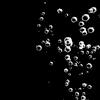Drinking bong water won’t get you high because THC doesn’t dissolve in water. Bong water contains tar, ash, mold, and bacteria while the taste is extremely unpleasant. Ingesting it may cause nausea, vomiting, or worse. Avoid it at any cost as there are simply no benefits to drinking it.

You Are Not That Stoned to Consider Drinking Bong Water
Let’s be honest. If you’re even asking whether bong water can get you high, things have probably gone sideways. Maybe you’re out of bud. Maybe someone dared you.
But here’s what you need to know at all times: drinking bong water won’t get you high. What it might do is make you throw up, or worse, send you to urgent care.
THC, the compound responsible for the high, doesn’t mix with water. It clings to fats and alcohol, not liquid ash soup.
So whatever is floating around at the bottom of your beaker isn’t psychoactive. It’s just a mix of tar, burnt resin, plant debris, and bacteria. You’d have better luck squeezing THC out of an old rolling paper.
Still, the myth sticks. People claim they’ve caught a buzz from sipping it. If anything happened at all, it was probably nausea mixed with wishful thinking. A dirty placebo.
This article walks through why bong water doesn’t hold THC, what’s actually in it, and why drinking it is a terrible idea. It also covers how to clean and manage your bong safely, what to do if someone drinks the water, and why dry pipes exist for a reason.
And if this thought even crosses your mind, you might need to replace the obsession with bong water with getting a better setup. Something like a 14" Beaker Bong with Ice Pinch, which is thick enough to handle anything, and great for delivering cool, fresh tasting hits.
Why Bongs Use Water: Cooling, Filtration, and Functionality
Before we get into the science of THC and why bong water doesn’t hold any, let’s talk about what that water is actually there for.
Bongs didn’t start using water because someone thought it looked cool. Water plays a specific role in how a bong functions, and if your setup is made right, it improves every part of the hit, except the flavor of the water itself. That part stays bad. Always.
Cooling the Smoke
When you burn flower, the smoke coming off it is hot. Without any kind of cooling system, that heat goes straight into your lungs, where it can feel harsh and burn on the inhale.
Water in a bong acts as a temperature buffer. As the smoke passes through, the water absorbs some of the heat and brings the temperature down before the smoke reaches your mouth.
Cooler smoke feels smoother. You can pull deeper, cough less, and actually enjoy the taste of your strain without flinching. That’s why ice pinches exist and why most high-functioning bongs, like the ones we build at TAG, are designed with enough space for water and airflow to work together—not fight each other.
Filtering Out Toxins
Bong water doesn’t just cool. It traps things you don’t want to inhale. As smoke bubbles through the water, it leaves behind:
-
Ash
-
Tar
-
Fine plant debris
All of these are byproducts of combustion. They collect in the water and stay out of your lungs, which is the entire point of using a water pipe in the first place.
But the water that catches all this? It gets dirty fast and turns toxic even faster. That’s why no one with a functional sense of smell thinks drinking it is a good idea.
Airflow and Drag Reduction
The final benefit of water in a bong is what it does for airflow. A good percolation system doesn’t just break up smoke, it balances it. Forward thinking companies like Thick Ass Glass use CAD to design downstems and percs that churn the smoke efficiently while keeping drag low.
You get better diffusion and smoother hits, but the water is just part of the process. It filters and cools, but it doesn’t add anything worth drinking.
Why THC Doesn’t Stay in Bong Water
The biggest reason people think drinking bong water might get them high is because smoke passes through it. The assumption is that if the smoke has THC in it, and that smoke touches the water, then maybe some of the good stuff gets left behind.
Sounds logical until you look at how THC actually behaves.
THC Solubility Basics
THC is fat-loving, not water-loving. In chemical terms, it is hydrophobic and non-polar.
Water is a polar solvent, which means the two repel each other. THC does not dissolve in water because the molecules do not interact. Instead of binding or mixing, THC just passes through the water in the smoke bubbles and continues into the chamber and up into your lungs.
This is why even the dirtiest, darkest bong water still contains barely any THC.
Most of what comes off your flower is either absorbed through your lungs or sticks to the inner walls of your piece. The water is there to catch ash and tar, not cannabinoids.
What THC Does Bind To
If you want to pull THC out of cannabis for edibles, tinctures, or vapes, you need a solvent that works with it. These are the ones that actually bond with THC:
-
Butter or oils used in cooking
-
Ethanol for tincture extraction
-
Glycerin for vape concentrates
None of these are found in bong water. This is why cannabis tea is made using infused coconut milk or cream, not just hot water.
So the next time someone says they felt high after drinking bong water, it wasn’t THC talking. It was their stomach sending out a distress signal.
What Nasty Stuff Resides in Bong Water
By now it should be clear that bong water is not some underused THC goldmine. But what exactly is floating in that murky mess once you’ve taken a few hits?
Bong water is meant to catch what your lungs should not have to deal with. That means everything that ends up in the water is stuff your body is better off avoiding.
And if you leave it sitting, the situation only gets progressively worse.
Chemical Contaminants
Every time you light up, combustion releases more than just smoke. Bong water captures the waste material that gets pulled through along with it. That includes:
-
Resin and tar, both of which contain carcinogenic compounds
-
Ash from the burnt flower
-
Soot and fine debris from incomplete combustion
These substances build up in the water quickly, especially during long sessions. They do not break down or get filtered out naturally. They just sit there, getting more concentrated with every bowl you clear. Drinking this is like chugging an ashtray after a bonfire.
There is no buzz coming from it, only chemical exposure your stomach was never meant to handle.
Microbial Contaminants
Leave bong water out for more than a day and you are giving bacteria and mold the perfect environment to grow. Add in shared use and you introduce saliva-based microbes too.
Some of the more concerning contaminants that show up include:
-
Mold spores that can trigger allergies or infections
-
Bacteria like E. coli and pseudomonas, known for causing digestive and respiratory issues
-
Germs passed through backwash from shared hits
It does not take much for these organisms to multiply. Once they are in there, that water becomes a health hazard.
Biofilm Development
If you have ever seen bong water form a shiny or slimy layer across the surface, that is biofilm. It is not just gross to look at.
Biofilm is a structured colony of microorganisms clinging to the inside of your piece. Once it forms, regular rinsing will not remove it. This stuff traps bacteria and holds it in place.
If your water has biofilm, it is not safe to touch, let alone drink.
How to Manage Bong Water the Right Way
Keeping your bong water clean is one of the simplest ways to improve your smoking experience and avoid the swampy mess that builds up when it sits too long. Dirty water not only ruins the flavor of your hit but also breeds bacteria and traps everything you’re trying to keep out of your lungs.
If you’re serious about your setup, managing your water is non-negotiable.
How Often to Change It
If you only load a bowl or two a day, change the water after each session. Waiting for the water to turn cloudy or start smelling is already too late.
Daily users who go through several bowls should be swapping the water out multiple times. You want each session to start with fresh filtration.
If you use concentrates, expect to change it even more often. Oils stick to the glass and thicken the water faster, which means a fresh swap is needed sooner just to keep things flowing right.
How to Dispose of It Safely
Dumping bong water in the sink might seem easy, but over time the resin buildup can clog your pipes.
If you must use the sink or toilet, run hot water before and after to help flush it through. Better yet, pour the water outdoors or into a sealable container that can be tossed out with your trash.
Either way, get it out of your living space. The longer it sits, the worse it gets.
TAG’s Easy-to-Clean Picks
18" Beaker Bong (Super Thick)
This piece features a wide base and generous chamber space, making it easy to pour out old water and rinse between sessions. The thicker walls add durability without making it clunky, which means you can handle it confidently during cleaning.
20" Straight Tube
Designed with a vertical profile and minimal internal corners, this bong allows for a fast rinse and simple water swaps. Its streamlined interior reduces buildup and makes maintenance feel less like a chore and more like part of the routine.
What Happens If You Drink Bong Water?
There is a big difference between catching a buzz and catching a stomach bug.
Drinking bong water will not get you high. That is not a theory, it is a fact. There is no THC in that water, just everything your bong worked to filter out. What you are left with is a mix of ash, tar, microbial growth, and chemical residue.
It is not psychoactive, it is toxic.
Most people who try it experience a wave of nausea almost immediately. That is followed by vomiting, sometimes diarrhea, and usually a headache or stomach pain.
These symptoms can hit fast and feel intense, especially if the water was stagnant or contaminated.
If it was a one-time mistake, chances are your body will flush it out and move on. But if symptoms get worse or last too long, it might be more than just a bad decision.
Seek medical help if you experience:
-
Persistent vomiting
-
Blood in stool
-
Fever or chills
-
Dizziness or dehydration
None of these outcomes have anything to do with cannabis. Bong water is not an edible or a tincture. It is just dirty runoff from a tool that works better when cleaned.
Don't Chase a High Where There’s None
If you’re looking to get lit, there are better options than gulping down something your bong already tried to clean out. That cloudy water at the bottom of your piece is not hiding THC. It is holding everything your lungs wisely avoided.
So if the idea ever crosses your mind again, take it as a sign. You don’t need a drink. You need a different tool. Preferably one with no water to tempt you.
🔥 Try a TAG 4.5’’ Dry Spoon Pipe Instead
This baby doesn’t need any water and it’s always ready to deliver a big hit. It fits in your pocket, skips the cleanup, and takes only a second to empty after you are done.


